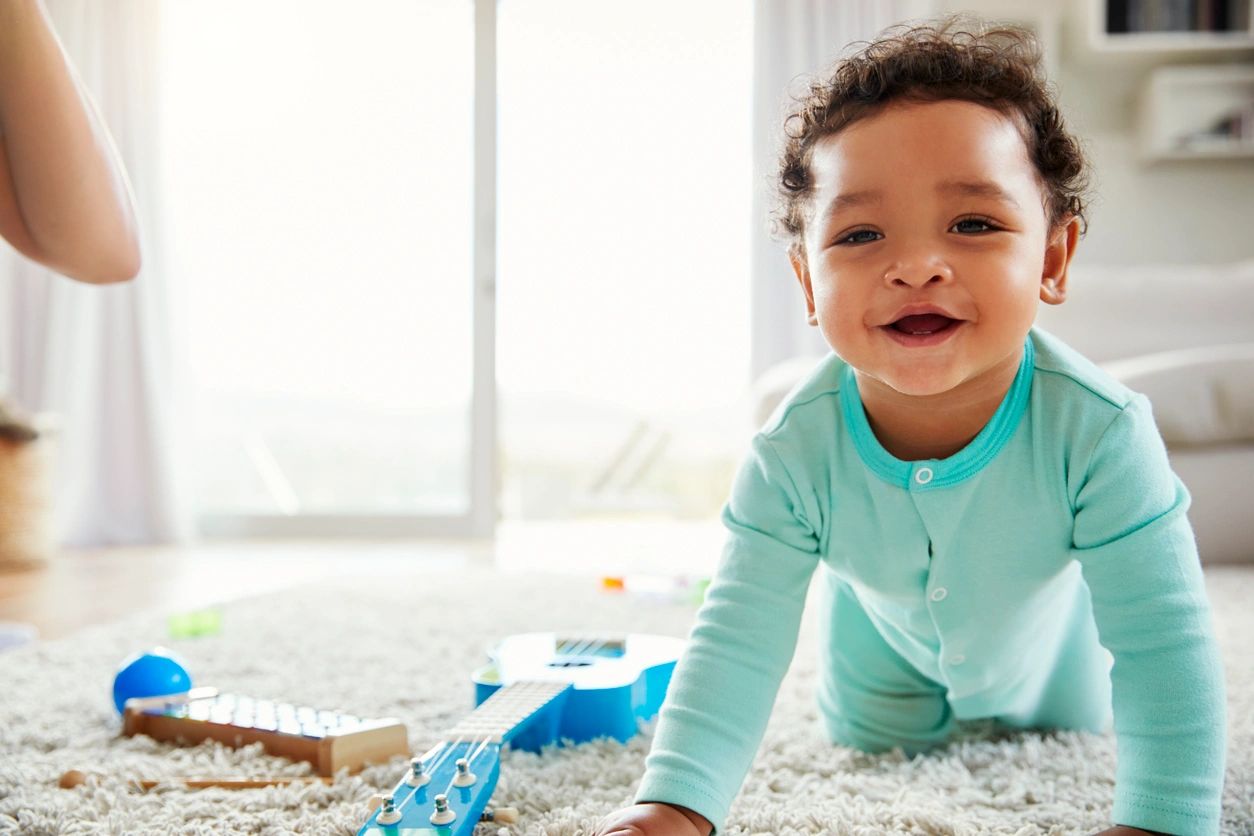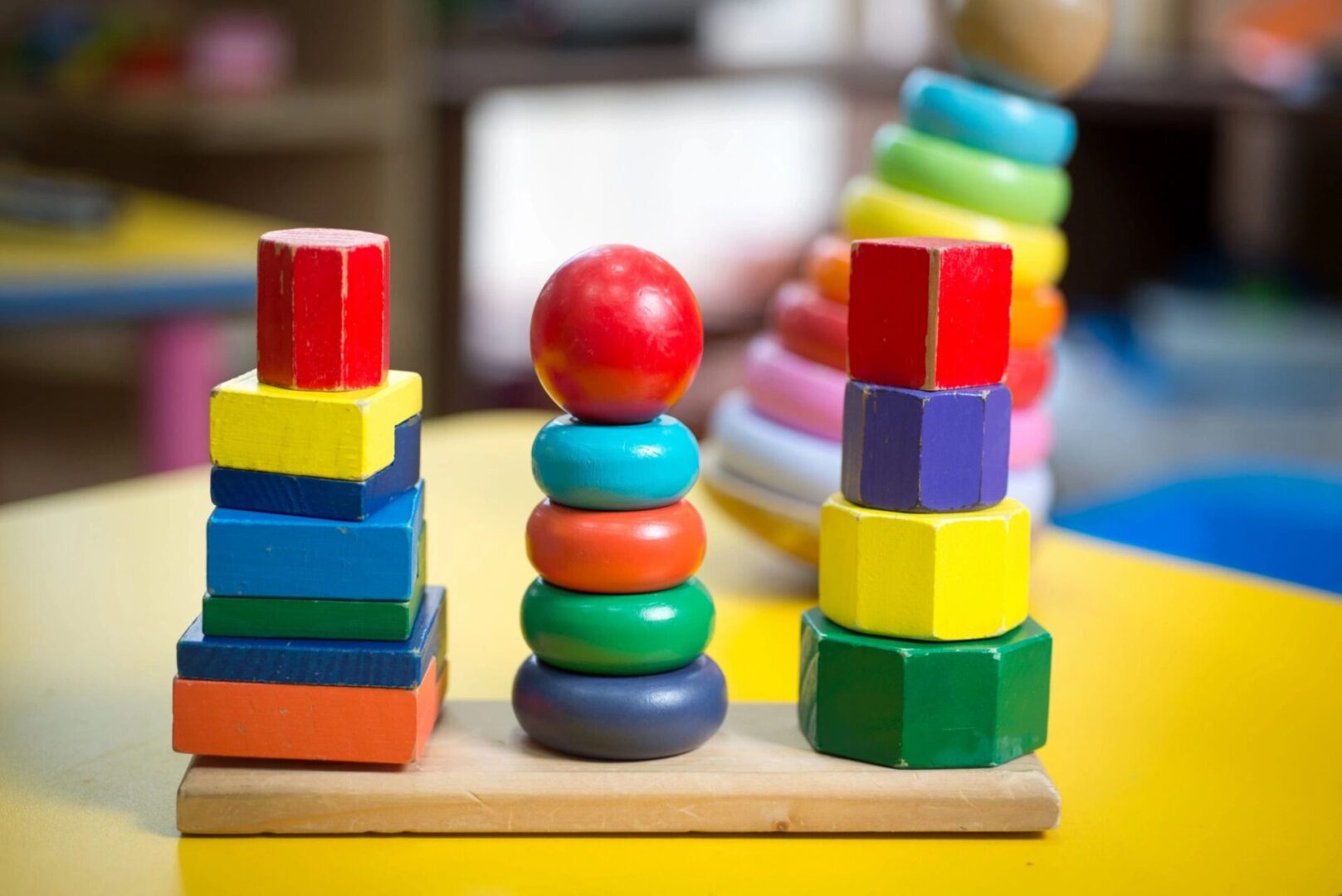Unlock Your Child’s Gift of Speech Through Therapy
Devoted to Improving the Language Abilities of Kids Since 1999
A Pediatric
Speech-Language Therapist
You Can Trust
Sprouting Speech is dedicated to improving your child’s speech and language abilities. Speech therapy is provided in your home, and parents are encouraged to sit in on therapy sessions when available. Family counseling and training are offered to parents who are able to play an active role in their child’s daily progress.

Home Care Provider
Lauren Tutundgy, MS, CCC-SLP, received her master’s degree in Speech and Language Pathology from Columbia University. She has a BS in Linguistics from the University of Michigan. She has years of professional experience providing therapeutic services to children ages 0-18. Devoted to meeting the individual needs of each child, Lauren develops and implements programs for children presenting with a variety of speech and language disorders, including oral motor weakness, feeding issues, articulation errors, verbal apraxia, expressive and receptive language delays, auditory processing disorder, attention deficit disorder, pervasive developmental disorder (PDD), autism, Asperger’s Syndrome, mental retardation, and cerebral palsy.
Professional Affiliations and Licensure
- New York State Licensure in Speech and Language Pathology
- New Jersey State Licensure in Speech and Language Pathology
- American Speech and Hearing Association, (CCC) Certificate of Clinical Competence, indicates that the professional has met national requirements and has attained the highest level of preparation.
- Teacher of the Speech and Hearing Handicapped (TSHH)

ASSESSING YOUR CHILD’S LANGUAGE ABILITIES
A child’s speech and language abilities will develop as they grow. If you are concerned that your child is not talking as much or as well as his or her peers, you can assess your child’s abilities based on milestones of normal communicative development. It is important to note that these milestones are guidelines for parents, and should not be used in isolation. They should always be reviewed in a broader context of understanding your child but may lead you to seek further assessment. Early attention to your child’s language development will help your child reach his or her full potential.
Learning Disabilities | What to Look For:
Preschool:
Language - Pronunciation problems. Slow vocabulary growth. Lack of interest in storytelling.
Memory - Difficulty learning numbers, the alphabet, days of the week, etc. Poor memory for routines.
Attention - Difficulty sitting still. Extreme restlessness. Lack of persistence at tasks.
Other - Difficulty learning left from right (possible visual spatial confusion). Difficulty interacting (poor social skills).
Lower Grades:
Language - Delayed decoding abilities. Difficulty following directions. Poor spelling.
Memory - Slow recall of facts. Organizational problems. Slow acquisition of new skills.
Attention - Impulsivity, lack of planning. Careless errors. Distractibility.
Other - Difficulty learning about time (temporal sequential organization). Poor grasp of math concepts.
Middle Grades:
Language - Poor reading comprehension. Lack of verbal participation in class. Difficulty with word problems.
Memory - Slow or poor recall of math facts. Failure of automatic recall.
Attention - Inconsistency. Poor self-monitoring. Poor ability to discern relevant detail.
Other - Poor learning strategies. Disorganization in time or space. Peer rejection.
Upper Grades:
Language - Weak grasp of explanations. Foreign language problems. Poor written expression. Difficulty summarizing.
Memory - Difficulty studying for tests. Weak cumulative memory. Slow work pace.
Attention - Memory problems due to poor attention. Mental fatigue.
Other - Poor grasp of abstract concepts. Failure to elaborate. Difficulty taking tests.
HOW PARENTS CAN HELP AT HOME
Children learn by imitating the speech and language of their caregiver. Parents can stimulate their child’s language development by providing an appropriate speech model. You can modify your language by slowing your speech rate and simplifying your language to match that of your child (e.g. if your child is at the single-word stage, you should use no more than 1-3 word phrases when talking to them.) It is important not to ask too many questions and to allow ample time for your child to process what you said. In addition, always give positive reinforcement for language use. Reinforcement should be functional. For example, if your child requests juice, the reinforcement is giving them juice and saying, “here it is,” as opposed to saying “good talking.”
There are many ways that you can encourage your child to talk while providing an appropriate language model. Self-talk and parallel talk allow you to discuss your actions or your child’s actions during play. Expand what your child just said into a longer phrase or sentence (e.g. if your child says “baby eat,” you can respond with “yes, the baby is eating an apple.”). Extend the topic in order to keep the conversation going (e.g. if your child says “baby is sick,” you can talk about taking the baby to the doctor.). Saying nothing for brief periods while you are playing gives the child an opportunity to initiate language. Giving choices provides an opportunity for your child to imitate words. Hiding or withholding objects create a reason for your child to request a desired object. Violating routines and object functions (e.g., drying your hands before you wash them, putting a shoe on your hand instead of your foot) may provoke a response from your child.

The first five years are a critical period in which language stimulation will have optimal results. Language stimulation needs to be attuned to your child’s developmental level and interest. A child’s ordinary routines and typical play provide many opportunities for enhancing his/her language development. You can use these opportunities to help your child become a more effective communicator.
HOW PARENTS CAN HELP AT HOME
Children learn by imitating the speech and language of their caregiver. Parents can stimulate their child’s language development by providing an appropriate speech model. You can modify your language by slowing your speech rate and simplifying your language to match that of your child (e.g. if your child is at the single-word stage, you should use no more than 1-3 word phrases when talking to them.) It is important not to ask too many questions and to allow ample time for your child to process what you said. In addition, always give positive reinforcement for language use. Reinforcement should be functional. For example, if your child requests juice, the reinforcement is giving them juice and saying, “here it is,” as opposed to saying “good talking.”
There are many ways that you can encourage your child to talk while providing an appropriate language model. Self-talk and parallel talk allow you to discuss your actions or your child’s actions during play. Expand what your child just said into a longer phrase or sentence (e.g. if your child says “baby eat,” you can respond with “yes, the baby is eating an apple.”). Extend the topic in order to keep the conversation going (e.g. if your child says “baby is sick,” you can talk about taking the baby to the doctor.). Saying nothing for brief periods while you are playing gives the child an opportunity to initiate language. Giving choices provides an opportunity for your child to imitate words. Hiding or withholding objects create a reason for your child to request a desired object. Violating routines and object functions (e.g., drying your hands before you wash them, putting a shoe on your hand instead of your foot) may provoke a response from your child.
The first five years are a critical period in which language stimulation will have optimal results. Language stimulation needs to be attuned to your child’s developmental level and interest. A child’s ordinary routines and typical play provide many opportunities for enhancing his/her language development. You can use these opportunities to help your child become a more effective communicator.

ENHANCING YOUR CHILD’S LANGUAGE DEVELOPMENT DURING EVERYDAY ACTIVITIES
0-6 Months
- Diaper Changing is an excellent opportunity for back-and-forth, face-to-face interaction. Use this time to imitate and respond to your baby’s sounds.
- Feedings are social times. Use feeding as an occasion to help babies signal anticipation and the desire for more. Even a 6-month-old can use eye gaze, vocalization, and gesture to indicate important ideas.
- Mirrors help a baby to recognize herself/himself as an individual, separate from a caregiver. Indicating body parts assists the child in creating an identity and introduces important vocabulary.
6-12 Months
- Peek-A-Boo is a wonderful game for teaching conversational turn-taking and cause and effect.
- Stacking Blocks provides an opportunity to teach early developing spatial terms such as up and down.
- Cause and Effect Toys that spin, pop up, and make noise at the push of a button, turn of a wheel, or spin of a dial offer the idea that “if I act, it will happen.”
- Board Books offer excellent opportunities for learning vocabulary, learning to attend to specific items, and introducing pre-literacy skills such as page turning and left-to-right orientation. Using photographs is a great way to create a personal book of important people, favorite toys, and other objects.
- Walks in the Stroller can be wonderful times for caregivers to talk about what your baby is seeing or hearing.
12-18 Months
- Push and Pull Toys are great for teaching early developing concepts such as push, pull, stop, and go.
- Pop-Up Toys are a chance to continue working on cause and effect, and to introduce simple questions such as “Where’s the doggie?” They are also helpful in teaching politeness markers such as “hi, doggie, bye doggie.”
- Bubbles are very popular with most children. Many children will vocalize “pop” as they pop the bubbles, and request “more” when they disappear.
18-24 Months
- Books are the most valuable tools for establishing joint attention, teaching morals (how to share, make friends, etc.), and teaching new concepts and vocabulary. In addition, they can help prepare your child for upcoming events (potty training, going to school, etc.). Reading to your child is the window to lifelong learning. Little by little, your child will begin to follow simple plots and be able to repeat lines as they hear their favorite stories again and again. Although it may be tedious to read the stories over and over, repetition is a toddler’s key to mastery.
- Mr. Potato Head is a favorite for teaching facial parts.
- Puzzles provide an opportunity to learn vocabulary. They come in all shapes, most with themes of early childhood interests such as foods, animals, or vehicles.
- Dollhouses and Figures represent real life and are appropriate for children of all ages. Acting out activities like eating, sleeping, and playing, while learning the names and places of household furniture is excellent for categorizing, early developing personal narratives, and overall vocabulary development.
- Sand Box Play is another vocabulary builder, as well as a chance to experiment with different textures. Sandboxes offer an opportunity to learn verbs such as dump, pour, and spill, and descriptive concepts like empty and full.
2 Years
- Legos are an excellent way to introduce prepositional phrases such as on top of, under, and in front of. They are great for teaching similarities and differences, and for building creative planning and executing skills.
- Cooking Sets with Foods, Baby Dolls, Equipment, Cars, etc., provide wonderful opportunities to act out activities of daily living, to develop abstract thinking skills, and talk about feelings.
- Shopping Trips can be language learning experiences with little effort on the part of the caregiver. Before going, let your child help you decide what you need. Give him/her a list of pictures so they can shop alongside you.
3 Years
- Arts and Crafts provide an opportunity to learn about shapes, colors, and sizes. The key is the process, not the finished product.
- Representational Toys: Dress-up, Cooking Sets, and Vehicles are a way to practice language that is useful both in play and in the real world. Providing children with toys that represent everyday tasks that they observe their parents engaging in, creates an opportunity for role-playing.
- Puppets are a wonderful way to reduce some of the anxiety in “reluctant” talkers. They are also a great way to learn how to take on the perspective of someone else. This skill is important for narrative development as well as peer interaction.
- Playdough is a creative material that allows children to invent anything they choose. In addition, you can give them an opportunity to describe their creation.
4-5 Years
- Rhyming is an important skill, which increases phonemic awareness and is a building block for future literacy. Try rhyming simple words like fat cat and then progressing to more complex rhymes incorporating rhyming names.
- Conversation with a 4-year-old is essential. At this age, your child should be able to tell you about events that happened in the past, and events that occurred when you were not present.
- Trains encourage cooperative play and creative problem-solving, offering multiple solutions for how to set up the tracks.
- Musical Instruments are great at any age. At 4 years, your child can learn to follow a sequence of musical beats and instructions.
- Blocks build creative skills, math skills, and science skills.
